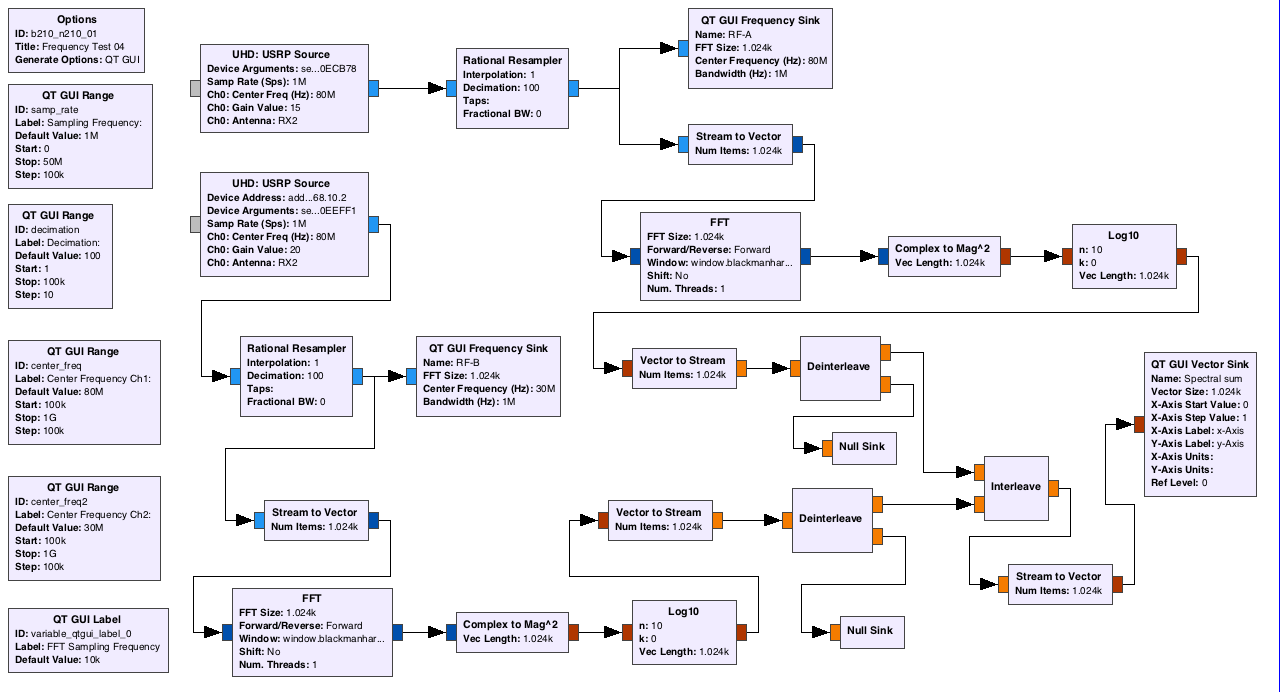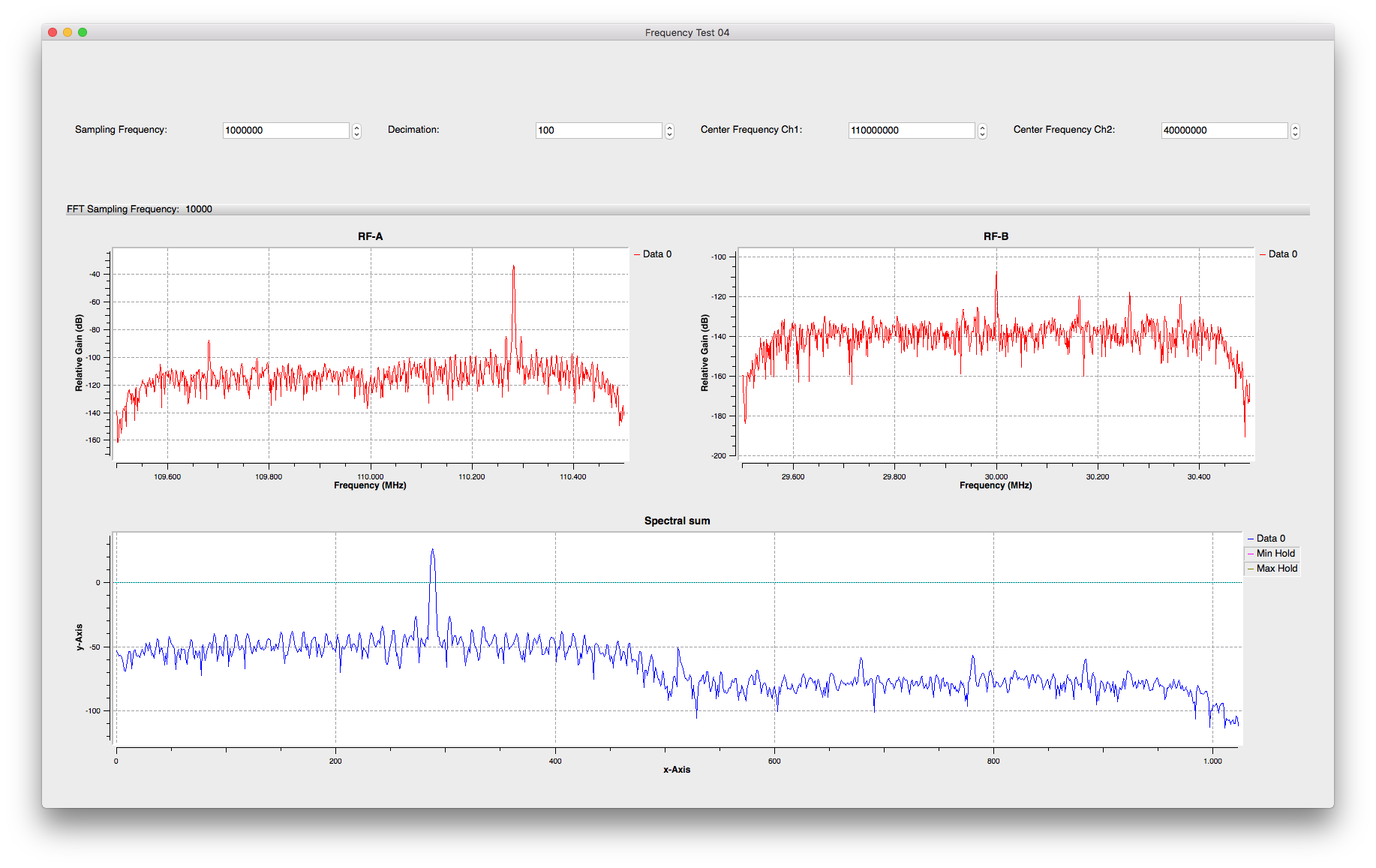In this post I show you how to create combined “super broad band” spectra from multiple narrow band sources.
In experimental scenarios, this is specially useful when we are interested to keep a real time overview of signals that are extremely separated wide apart in the frequency domain. Use of broadband data acquisition is usually an alternative, but devices with very high band width are expensive and the data processing is tedious.
A solution is to use several software defined radios (SDR) to make sample regions of interest and combine the results. This can of course always be done offline, but sometimes it is also desirable to have an online super broad band monitor to make sure events are fine, in the case of storage ring physics e.g. to make sure you can see several events at the same time.
Explanation
In this example we are using 2 UHD sources (one USRP2 device N210, and one B210) to provide unsynched signal from two independent signal sources. For better visualization, N210 receives a phase modulated signal around 40 MHz and the B210 a sine at 110MHz.

